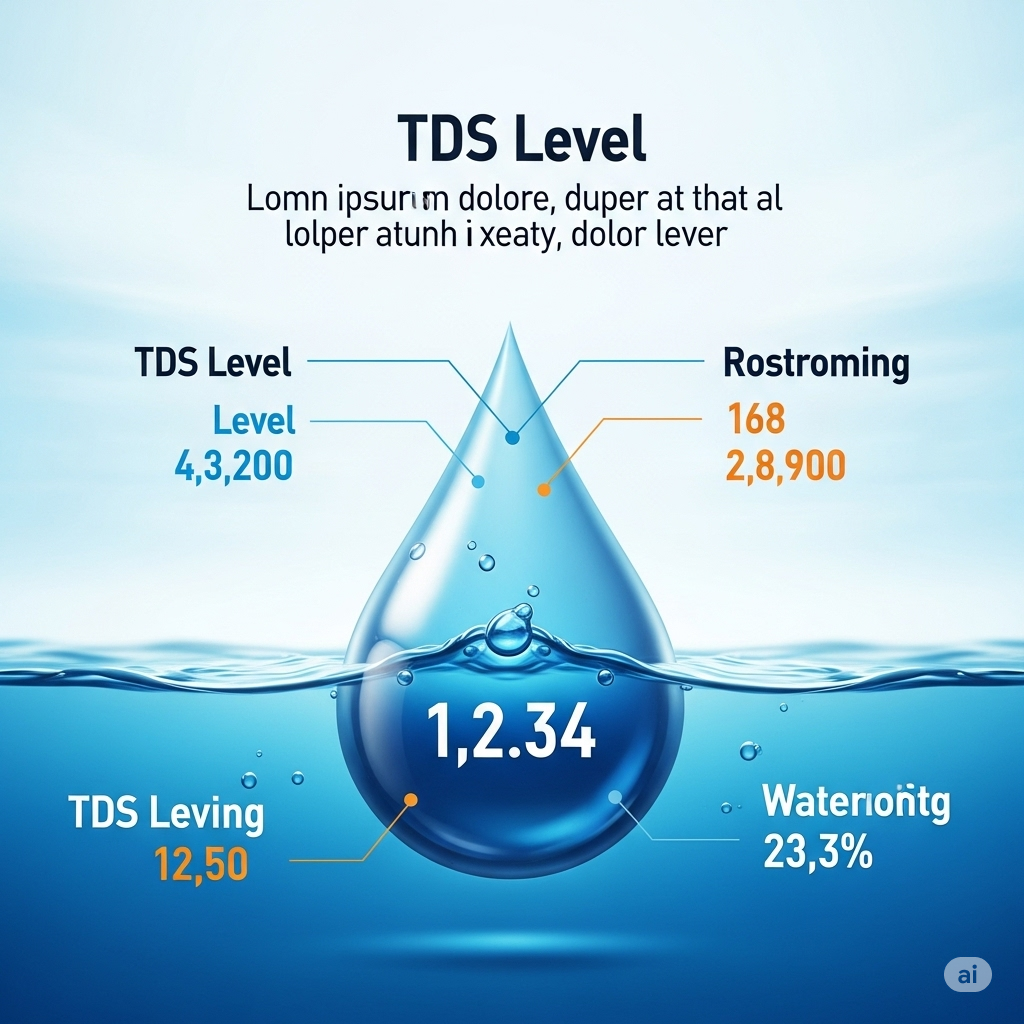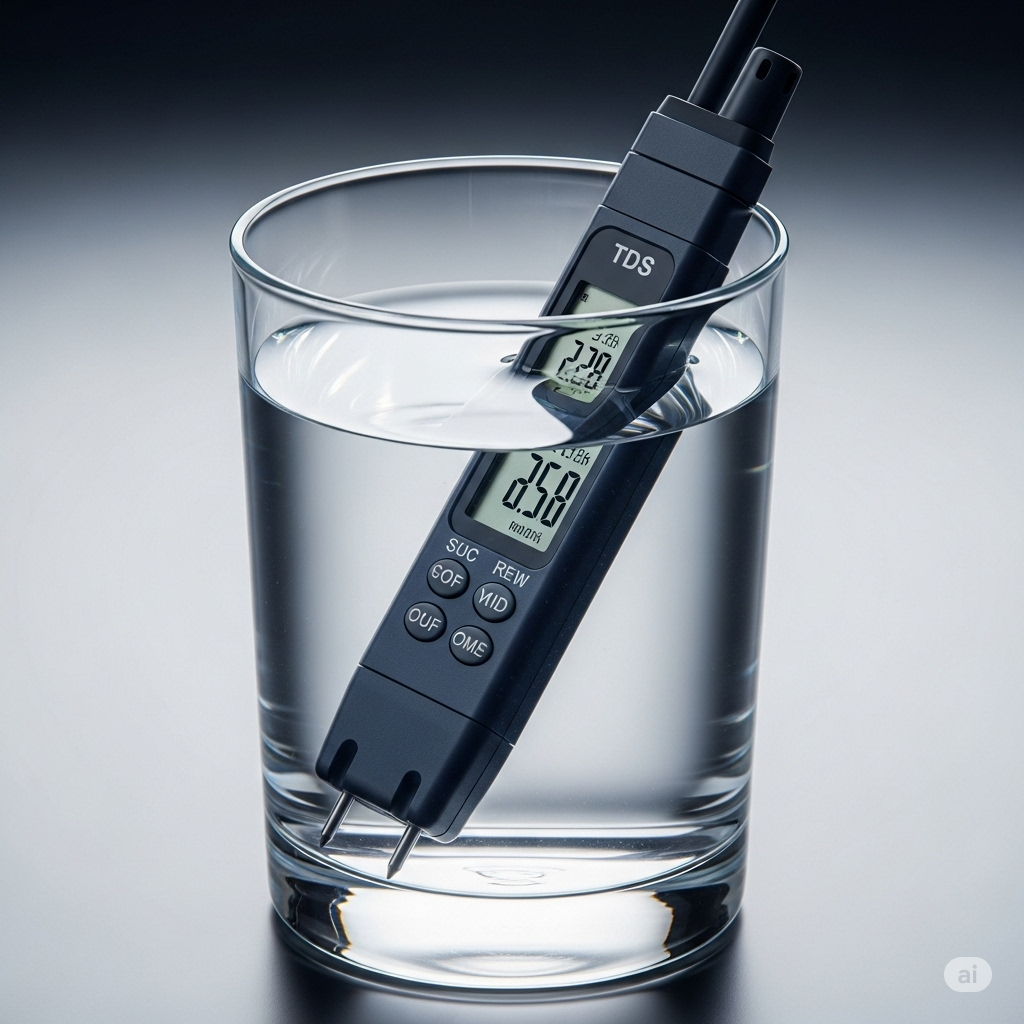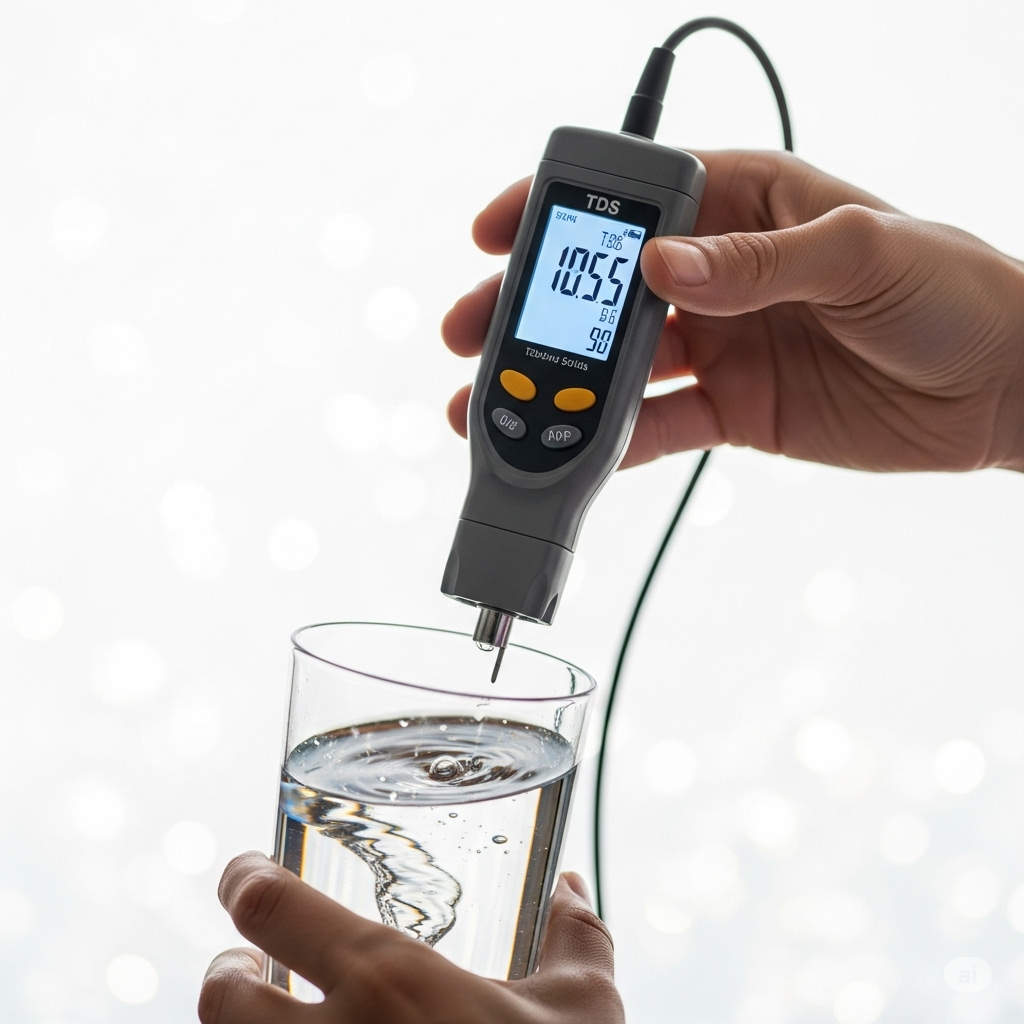What Is Water TDS Level?

TDS stands for Total Dissolved Solids, and it refers to the total concentration of dissolved substances in water. These solids can include:
Minerals (like calcium, magnesium, potassium)
Salts (like chlorides, sulfates, bicarbonates)
Metals (like lead, iron, copper in trace amounts)
Organic matter (from natural sources or pollution)
The TDS level in water affects its taste, quality, and health benefits. While some dissolved solids are essential for human health, excessively high or low TDS levels can make water unsuitable for drinking. Ideal drinking water typically has a TDS range between 50 to 150 ppm, which provides essential minerals without any harmful substances.
Water with very low TDS may taste flat and lack minerals, while very high TDS levels (above 500 ppm) can give water a salty or bitter taste and may indicate the presence of harmful contaminants. That’s why checking TDS is an important step in determining whether water is safe and healthy to drink. Devices like TDS meters are commonly used to measure the purity and mineral content of drinking water, especially when using purification systems like Reverse Osmosis (RO).
TDS Level Chart for Drinking Water
| TDS Level (ppm) | Water Quality | Remarks |
|---|---|---|
| 0 – 50 | Very Low | Water is too pure, lacks essential minerals |
| 50 – 150 | Excellent | Ideal for drinking; balanced minerals |
| 150 – 300 | Good | Acceptable; mild taste, still healthy |
| 300 – 500 | Fair | Safe, but may have a slightly salty or bitter taste |
| 500 – 1200 | Poor | Not recommended; may affect health or taste |
| Above 1200 | Unacceptable | Unsafe for drinking; may contain harmful substances |
Why Should You Measure TDS Levels?
You should measure TDS levels to ensure the safety, taste, and mineral balance of drinking water, and to check the effectiveness of water purifiers like RO systems.

- Health Safety
- High TDS may indicate harmful contaminants like heavy metals or chemicals.
- Very low TDS can mean lack of essential minerals (like calcium and magnesium).
- Water Taste & Quality
- TDS affects the taste — too high = salty/bitter, too low = flat.
- Check Water Purifier Efficiency
- Helps monitor how well your RO or other filtration system is working.
- Protect Household Appliances
- High TDS can cause scaling in kettles, geysers, and water heaters.
- Ensure Proper Mineral Balance
- Drinking water should have a healthy mineral content (ideal TDS: 50–150 ppm).
How to Measure Water TDS Level

Measuring the TDS (Total Dissolved Solids) level in water is simple and can be done using a TDS meter, a compact digital device.
- Get a Digital TDS Meter
- Easily available online or at water purifier shops (price: ₹300–₹1000).
- Turn On the TDS Meter
- Press the power button to start the device.
- Remove the Protective Cap
- Expose the metal sensor tip at the bottom.
- Dip the Meter into the Water Sample
- Submerge the tip up to the marked level.
- Make sure the water covers the sensors completely.
- Wait for the Reading
- Within 2–5 seconds, the TDS value will appear on the digital screen (in ppm).
- Note the TDS Reading
- Compare it with the ideal TDS range (50–150 ppm is best for drinking).
- Turn Off and Dry
- Turn off the meter and wipe it dry before storing.
How Does TDS Affect Water Quality?
TDS (Total Dissolved Solids) has a direct impact on the taste, safety, and health benefits of water. It determines how pure or mineral-rich the water is — both extremes (too low or too high) can affect water quality negatively.
- Taste of Water
- Low TDS (<50 ppm): Water may taste flat or bland due to lack of minerals.
- High TDS (>500 ppm): Water may taste salty, bitter, or metallic depending on the minerals or contaminants present.
- 🛡️ Safety & Health
- Very High TDS (>1200 ppm): Can contain harmful substances like nitrates, heavy metals, or pesticides — unsafe for drinking.
- Very Low TDS: Lacks essential minerals like calcium and magnesium, which are beneficial for health.
- ⚙️ Appliance Health
- High TDS causes scaling and deposits in RO systems, kettles, and pipes, reducing appliance life.
- 🧪 Purifier Performance
- Measuring TDS helps evaluate the effectiveness of RO purifiers in removing impurities.
- 💧 Hydration Quality
- Water with balanced TDS (50–150 ppm) hydrates better and contributes to mineral intake.
how to Reduce or Remove TDS in Water
Reverse Osmosis (RO)
- How it works: Forces water through a semipermeable membrane that blocks dissolved solids.
- Removes: 90–99% of TDS.
- Best for: High TDS water.
- Commonly used in: Home water purifiers.
2. Distillation
- How it works: Boils water to produce steam, then condenses it back into liquid, leaving solids behind.
- Removes: Most types of TDS and contaminants.
- Drawback: Slow and energy-intensive.
- Used in: Labs, medical-grade purification.
3.Deionization (DI)
- How it works: Uses ion-exchange resins to replace mineral ions with H⁺ and OH⁻, forming pure water.
- Removes: Most dissolved salts.
- Used in: Industrial and lab settings.
4. Electrodialysis
- How it works: Uses electric current and membranes to separate ions from water.
- Efficient for: Industrial and desalination use